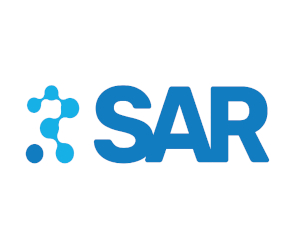Acidosis tubular renal como presentación clínica de Síndrome de Sjögren: reporte de caso
Resumen
Presentamos el caso clínico de una mujer en la quinta década de la vida, de nacionalidad argentina, que acudió a la guardia de clínica médica de un hospital de tercer nivel por cuadro de mialgias y paresia en las cuatro extremidades, de inicio agudo, progresivo, con dificultad para la movilización de miembros superiores, bipedestación y marcha. Se constató hipocalemia severa, acidosis metabólica, pH urinario alcalino, brecha aniónica urinaria positiva (excreción de amonio), hipocitraturia e hipercalciuria, por lo que se diagnosticó Acidosis Tubular Renal (ATR) tipo I; además se evidenció elevación de creatinkinasa (CK) e insuficiencia renal aguda que corrigió con la reposición de líquidos. Al interrogatorio dirigido, la paciente refirió síndrome seco asociado a artralgias, de varios años de evolución, por lo que se realizaron estudios complementarios que apoyaron el diagnóstico de Síndrome de Sjögren.Citas
I. Ramos-Casals M, Solans R, Rosas J, Camps MT, Gil A, del Pino-Montes J, et al. Primary Sjögren Syndrome in Spain. Medicine (Baltimore). 2009;87(4):210–9.
II. Ramos-Casals M, Brito-Zeron P, Siso-Almirall A, Bosch X. Primary Sjogren syndrome. Bmj [Internet]. 2012;344(jun14 1):e3821–e3821. Available from: http://www.bmj.com/cgi/ doi/10.1136/bmj.e3821.
III. Quintana R, Silvestre AMR, Goñi M, García V, Mathern N, Jorfen M, et al. Prevalence of musculoskeletal disorders and rheumatic diseases in the indigenous Qom population of Rosario, Argentina. Clin Rheumatol. 2016;35:5–14.
IV. Valim V, Zandonade E, Pereira AM, Honor O, Filho DB, Serrano EV, et al. Importante área metropolitana no Brasil. 2013;53(1):29–34.
V. F ernández-Ávila DG, Rincón-Riaño DN, Bernal-Macías S, Gutiérrez Dávila JM, Rosselli D. Prevalence and Demographic Characteristics of Sjögren’s Syndrome in Colombia, Based on Information from the Official Ministry of Health Registry. Reumatol Clin. 2018;(xx):5–8.
VI. Vivino F, Bunya VY, Massaro-Giordano G, Johr CR, Giattino SL, Schorpion A, et al. Sjogren’s syndrome: An update on disease pathogenesis, clinical manifestations and treatment. Clin Immunol [Internet]. 2019;203(April):81–121. Available from: https://doi.org/10.1016/j.clim.2019.04.009.
VII. Rodríguez Soriano J. Renal tubular acidosis: The clinical entity. J Am Soc Nephrol. 2002;13(8):2160–70.
VIII. Yaxley J, Pirrone C. Review of the Diagnostic Evaluation of Renal Tubular Acidosis. 2016;525–30.
IX. Reddy P. Clinical approach to renal tubular acidosis in adult patients. Int J Clin Pract. 2011;65(3):350–60.
X. Stedwell Ray E, Allen Kevin M. BLS. Hypokalemic paralysis. Am J Emerg Med. 1992;10(2):143–8.
XI. V itali C, Bombardieri S, Jonsson R, Moutsopoulos HM, Alexander EL, Carsons SE, et al. Classification criteria for Sjögren’s syndrome: a revised version of the European criteria proposed by the American-European Consensus Group. Ann Rheum Dis [Internet]. 2002;61(6):554–8. Available from: http://www.ncbi.nlm.nih.gov/pubmed/12006334%0A http://www.pubmedcentral.nih.gov/articlerender.fcgi?artid=PMC1754137
XII. Goules AV, Tatouli IP, Moutsopoulos HM, Tzioufas AG. Clinically significant renal involvement in primary sjögren’s syndrome: Clinical presentation and outcome. Arthritis Rheum. 2013;65(11):2945–53.
XIII. L uo J, Huo Y, Wang J, Guo H. High-Risk Indicators of Renal Involvement in Primary Sjogren’s Syndrome: A Clinical Study of 1002 Cases. 2019;2019.
XIV. Garza-Alpirez A, Arana-Guajardo AC, Esquivel-Valerio JA, Villarreal-Alarcón MA and G-DDA. Case Report Hypokalemic Paralysis due to Primary Sjögren Syndrome: Case Report and Review of the Literature. 2017;2017.
XV. Ramos-Casals M, Brito-Zerón P, Seror R, Bootsma H, Bowman SJ, Dörner T, et al. Characterization of systemic disease in primary Sjögren’s syndrome: EULAR-SS Task Force recommendations for articular, cutaneous, pulmonary and renal involvements. Rheumatol (United Kingdom). 2015;54(12):2230–8.
XVI. T oosi TD, Naderi N, Movassaghi S, Seradj MH, Khalvat A, Shahbazi F. Secondary Sjogren’s syndrome presenting with hypokalemic periodic paralysis. Oxford Med Case Reports. 2014;2014(8):135–7.
XVII. R yuji Shioji, Takashi Furuyama, Seiju Onodera, Hiroshi Saito, Hiroshi Ito MDYSM. Sjögren’s Syndrome and Renal Tubular Acidosis. Am J Med. 48:456–63.
Derechos de autor 2019 Sociedad Argentina de Reumatología

Esta obra está bajo licencia internacional Creative Commons Reconocimiento-NoComercial-SinObrasDerivadas 4.0.






